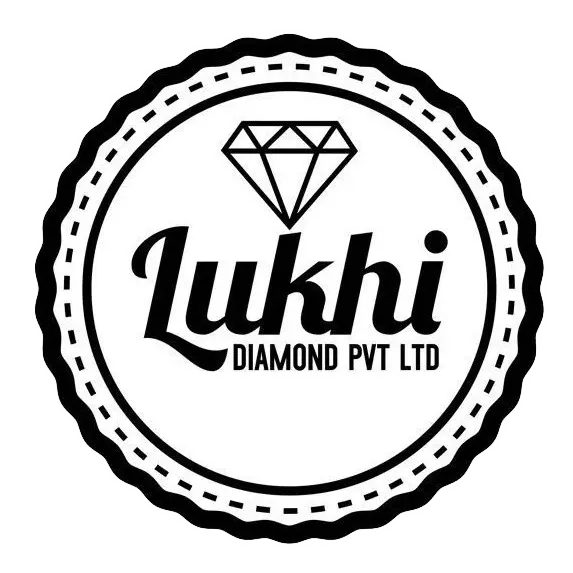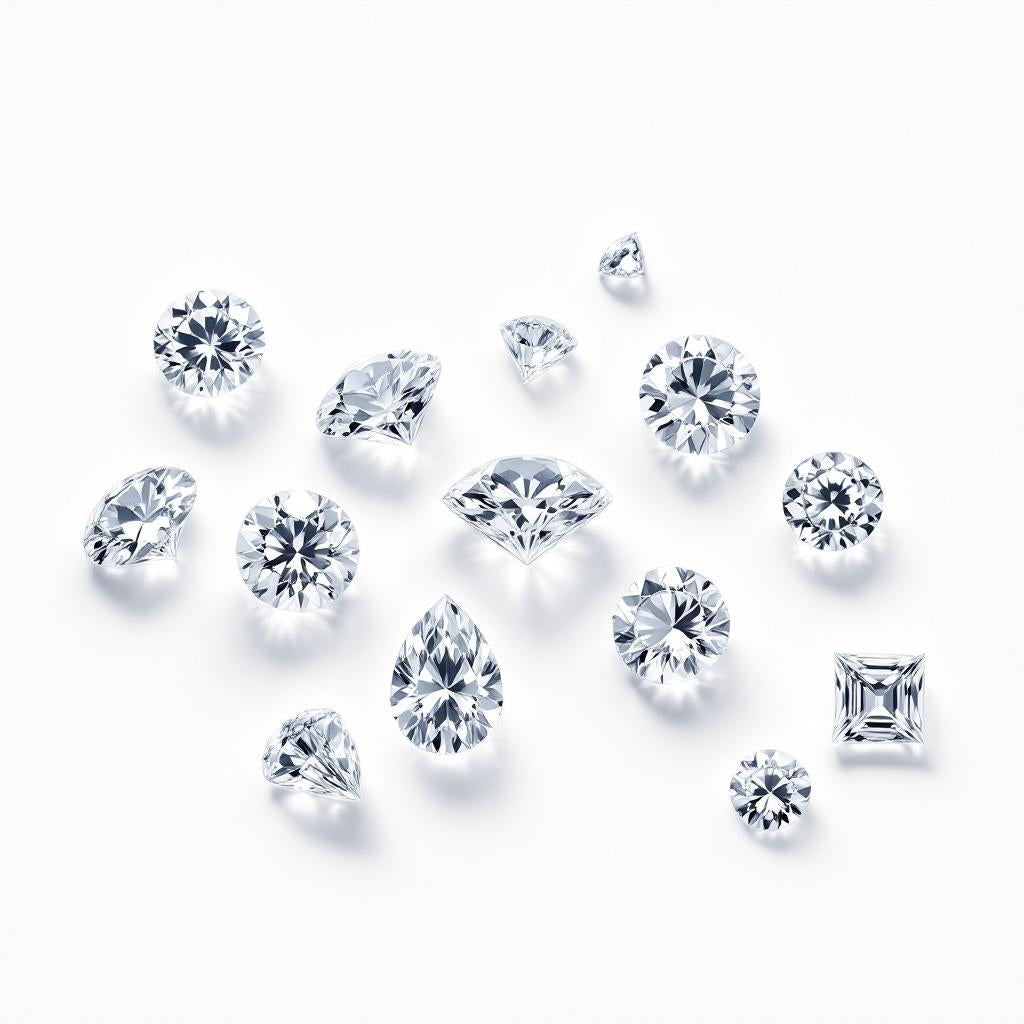Article: 💎 CVD Diamonds vs Moissanite: Understanding the Differences
💎 CVD Diamonds vs Moissanite: Understanding the Differences
Introduction
Choosing the perfect gemstone can be overwhelming — especially with modern alternatives like CVD diamonds and Moissanite entering the jewelry market. Both offer stunning brilliance, ethical sourcing, and affordable luxury, but they are not the same.
While CVD diamonds are real diamonds grown in a lab, Moissanite is a completely different gemstone with its own unique characteristics. This blog will help you understand their differences in composition, brilliance, durability, and cost so you can make the right choice for your jewelry.
🌍 What Are CVD Diamonds?
CVD (Chemical Vapor Deposition) diamonds are lab-grown diamonds created using advanced technology that replicates the natural diamond-forming process. A thin diamond “seed” is placed in a vacuum chamber filled with carbon-rich gases. When heated, the carbon atoms bond to the seed, slowly building up a pure diamond crystal layer by layer.
Key Features of CVD Diamonds
1. Composition:
100% pure carbon — identical to natural diamonds.CVD (Chemical Vapor Deposition) diamonds are composed entirely of carbon atoms, just like natural diamonds formed deep within the Earth.CVD diamond is a real diamond — only its origin differs.
2. Origin:
Grown in laboratories using ethical and sustainable processes.Unlike mined diamonds, CVD diamonds are created in high-tech laboratories under controlled conditions.
The process mimics the natural diamond-forming environment — but without the environmental damage or ethical concerns associated with mining.CVD diamonds an eco-friendly and ethical alternative, ideal for modern consumers who value transparency and sustainability.
3. Appearance:
Visually identical to mined diamonds. To the naked eye, there is no visible difference between a CVD diamond and a natural one.
Both exhibit the same level of brilliance, fire, and clarity — even gemologists often require advanced instruments to distinguish between them.ring, pendant, or earrings, CVD diamonds deliver the same timeless elegance and beauty as their natural counterparts.
4. Hardness:
CVD diamonds share the same exceptional hardness (10 on the Mohs scale) as natural diamonds. This makes them the hardest natural material on Earth — resistant to scratches, wear, and damage. Ideal for daily wear jewelry, such as engagement rings. In short, a CVD diamond retains its sparkle and structure for a lifetime — a true symbol of enduring beauty.
5. Brilliance:
Displays the same sparkle and fire as a natural diamond. Thanks to its identical crystal structure and refractive properties, a CVD diamond reflects and refracts light just like a mined diamond.With expert cutting and polishing, CVD diamonds achieve the same dazzling play of light that makes natural diamonds so mesmerizing.
💖 Why People Love CVD Diamonds

CVD diamonds combine luxury, ethics, and affordability. They are real diamonds but come without the environmental harm or conflict mining, offering timeless beauty with a clear conscience.People love CVD diamonds because they offer the same beauty, brilliance, and durability as natural diamonds — but with a modern, ethical, and affordable twist. They are eco-friendly, conflict-free, and budget-conscious, making them a smart choice for those who value both luxury and responsibility. With exceptional clarity, customizable options, and sustainable origins, CVD diamonds let buyers enjoy real diamond sparkle with a clear conscience.
✨ What Are Moissanite Diamond?
Moissanite is a gemstone made of silicon carbide (SiC). It was discovered by French scientist Henri Moissan in 1893 inside a meteor crater. Because natural Moissanite is extremely rare, all jewelry-grade Moissanite today is lab-created. It’s known for its brilliance, fire, and durability, making it an excellent choice for engagement rings and fine jewelry.
Key Features of Moissanite Diamond
1. Composition:
Silicon carbide, not carbon.Unlike diamonds, which are made of pure carbon, moissanite is composed of silicon carbide (SiC) — a compound of silicon and carbon atoms bonded together.
This unique chemical makeup gives moissanite its own set of optical and physical characteristics, including a slightly different kind of brilliance and color dispersion.
2. Origin:
100% lab-created.Natural moissanite is extremely rare, found only in trace amounts within meteorites and certain rock formations.
Because of this rarity, all moissanite gemstones used in jewelry today are lab-grown using advanced technology.This lab-grown origin makes moissanite an environmentally responsible and conflict-free gemstone, perfect for conscious consumers.
3. Hardness:
9.25 on the Mohs scale — durable but slightly softer than diamonds.This means it’s extremely durable, resistant to scratches, and ideal for everyday wear — including engagement rings and daily jewelry pieces.Keeps its brilliance for decades with minimal maintenance.In short, moissanite combines beauty and resilience, offering a long-lasting sparkle for a lifetime.
4. Brilliance:
Higher refractive index (2.65), producing more rainbow fire and sparkle.One of moissanite’s most admired qualities is its extraordinary brilliance.
It has a refractive index of 2.65–2.69, which is higher than diamond’s 2.42 — meaning it bends light more intensely, creating more sparkle.
5. Color:
Moissanite comes in a variety of color grades, allowing buyers to choose the tone that best fits their style and budget.
-
Colorless (D–E–F): Most premium and diamond-like appearance
-
Near-colorless (G–H–I): Slight warmth visible under certain lighting
-
Warm tones (J and beyond): Soft yellow or champagne hues, popular for vintage-inspired designs
💖 Why People Love Moissanite

Moissanite’s brilliance, affordability, and ethical sourcing make it a top choice for modern couples seeking elegance and sustainability without the high price tag. People love Moissanite for its brilliant sparkle, affordability, and ethical origins. It offers the same luxurious look as a diamond but with more fire and brilliance, thanks to its higher refractive index. Being lab-created, it’s eco-friendly, conflict-free, and budget-friendly, making it a top choice for modern couples who value beauty, sustainability, and smart spending.
💠 CVD Diamonds vs Moissanite: A Detailed Comparison
| Feature | CVD Diamond | Moissanite |
|---|---|---|
| Composition | Pure Carbon | Silicon Carbide (SiC) |
| Origin | Lab-grown | Lab-created |
| Hardness (Mohs) | 10 | 9.25 |
| Brilliance (Refractive Index) | 2.42 | 2.65 |
| Sparkle Type | White brilliance | Rainbow fire |
| Color Range | D–Z (colorless to yellow) | Near-colorless to warm hues |
| Durability | Extremely durable | Very durable |
| Price | More expensive | 70–90% cheaper |
| Authenticity | Real diamond | Diamond alternative |
| Eco-Friendly | Yes | Yes |
| Resale Value | High | Low |
💎 Visual and Aesthetic Differences
1. ✨Sparkle and Brilliance
CVD Diamonds
CVD (Chemical Vapor Deposition) diamonds display the classic diamond brilliance that has captivated jewelry lovers for centuries. Their sparkle is balanced and elegant, characterized by:
-
Brilliance (white light reflection): Gives a crisp, clean white sparkle.
-
Fire (colored light dispersion): Subtle flashes of rainbow hues that enhance the diamond’s beauty without overpowering it.
Because CVD diamonds have the same crystal structure as natural diamonds, their light performance is identical — sophisticated, timeless, and natural-looking.
Moissanite
Moissanite, on the other hand, has a higher refractive index (2.65–2.69) than diamonds (2.42). This gives it an extraordinary sparkle that’s often more intense and colorful. Its brilliance and fire are significantly greater, producing:
-
Intense rainbow flashes under light.
-
A vivid “disco-ball” effect that makes it appear even more dazzling in bright environments.
While this extra fire makes Moissanite eye-catching and lively, some people find it too colorful or artificial-looking compared to the refined white sparkle of a diamond.
2. 🎨Color and Clarity
CVD Diamonds
CVD diamonds, like natural diamonds, come in a range of color grades — from colorless (D–F) to slightly tinted (G–J) and beyond.
-
Color: Advanced lab-growing techniques now produce nearly colorless CVD diamonds, often rivaling the best natural stones.
However, some early CVD diamonds displayed brownish or grayish hues, which can be corrected through post-growth treatments. -
Clarity: Since they are lab-grown under controlled conditions, CVD diamonds tend to have fewer inclusions than mined diamonds. Their clarity can range from Flawless (FL) to Slightly Included (SI), depending on the growth environment.
The result is a crystal-clear gem with minimal imperfections — a perfect choice for those who love natural brilliance without visual flaws.
Moissanite
Moissanite is naturally near-perfect in clarity because it is 100% lab-created with minimal inclusions or blemishes.
-
Color: Moissanite was originally available in yellow or greenish hues, but modern technology has introduced colorless and near-colorless varieties that mimic diamonds very closely.
However, under certain lighting, Moissanite may show slight tints of yellow, gray, or green, especially in larger stones. -
Clarity: Almost all Moissanites are graded as VVS or better, meaning their internal appearance is exceptionally clear.
Despite its near-flawless clarity, Moissanite’s higher refractive index sometimes creates double refraction, which can give the stone a “facet-doubling” effect when viewed from certain angles.
3. 💎Cut and Appearance
Both CVD diamonds and Moissanite are available in popular cuts such as round, oval, cushion, and emerald, offering endless design options for jewelry lovers. While both stones are expertly faceted to enhance brilliance, Moissanite’s higher refractive index gives it a more intense, fiery sparkle than diamonds.
CVD diamonds display a classic white brilliance, elegant and timeless, while Moissanite shines with vivid rainbow flashes, making it appear more radiant under bright light.
In short, diamonds offer refined elegance, and Moissanite delivers bold brilliance — each beautiful in its own way.
💰 Cost Comparison
When it comes to price, CVD diamonds and Moissanite differ significantly — making both appealing depending on your budget and preferences.
CVD Diamonds are more affordable than natural diamonds, often costing 30–40% less while maintaining the same chemical composition and brilliance. However, because they are real diamonds, they’re still more expensive than Moissanite. Prices vary based on the 4Cs — cut, color, clarity, and carat weight, just like with natural diamonds.
Moissanite, on the other hand, is a budget-friendly alternative that offers maximum sparkle for a fraction of the price. A Moissanite gem of the same size as a diamond can cost up to 90% less, making it an excellent choice for couples seeking beauty and value without compromise.
In short:
-
💎 CVD Diamond: Real diamond, moderately priced.
-
✨ Moissanite: Affordable, brilliant, and perfect for value-conscious buyers.
🌱 Ethical and Environmental Impact
Both gems are sustainable and conflict-free alternatives to mined diamonds:
- CVD Diamonds: Require less energy than mining and cause minimal environmental damage.
- Moissanite: Fully lab-created with one of the lowest carbon footprints among gemstones.
💖 Symbolism and Emotional Value

CVD Diamonds:
Like natural diamonds, CVD diamonds symbolize eternal love, commitment, and strength. Choosing a lab-grown diamond can also reflect values like ethics, sustainability, and conscious living.
Moissanite:
Moissanite represents resilience, brilliance, and individuality. Its unique sparkle makes it a symbol of personal style and thoughtful choice, perfect for those valuing beauty with a conscience.
🧠 Which Should You Choose?

Choose CVD Diamond if you want:
- A real diamond with long-term value.
- Classic white brilliance.
- Lifetime durability.
Choose Moissanite if you want:
- Budget-friendly, eco-conscious beauty.
- Extra sparkle and fire.
- A modern, unique look.
❓ Frequently Asked Questions (FAQ)
- Is Moissanite a real diamond? No, Moissanite is a distinct gemstone made of silicon carbide.
- Are CVD diamonds real diamonds? Yes, they have the same chemical and physical properties as mined diamonds.
- Which is more durable? CVD diamonds are harder, but Moissanite is also suitable for everyday wear.
- Does Moissanite lose its sparkle? No, it retains brilliance indefinitely.
- Which has better resale value? CVD diamonds generally have higher resale value than Moissanite.
🌟 Final Thoughts
Both CVD diamonds and Moissanite are ethical, sustainable, and visually stunning choices. If you prefer a real diamond with long-term value, go for CVD. If you love maximum brilliance and budget-friendly beauty, Moissanite is the perfect fit. Either way, you’ll own a gemstone that combines luxury with conscience.








Leave a comment
This site is protected by hCaptcha and the hCaptcha Privacy Policy and Terms of Service apply.